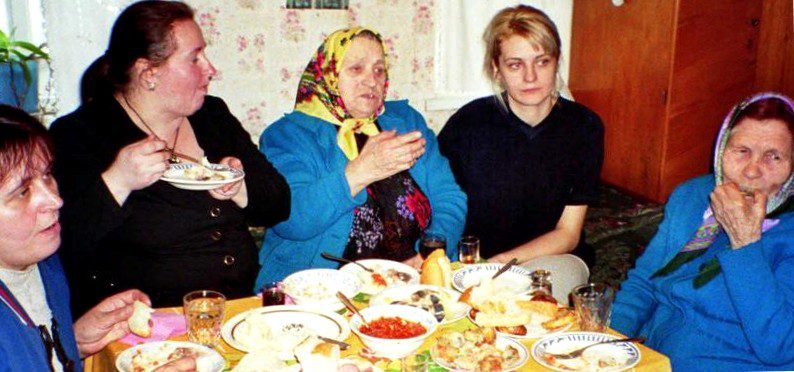Forced laborers were subjected to meager and cold fare

The grammar school teacher from kulmbach reported that the forced laborers' work in agriculture was somewhat profitable, but that their work in industry was often characterized by unscrupulous exploitation.
Today, the woman is almost 85 years old, but she remembers her time as a forced laborer as if it had been yesterday. Her name is olga witischenko, and today she lives in a small dacha near cherkassy in ukraine.
As a 15-year-old girl, she was deported to schweinfurt in may 1942 and assigned to the kugelfischer company. A year later, she was shipped off with hundreds of other "eastern" workers to the hopelessly overcrowded barracks camp seidenhof near kulmbach.
In the disused spinning mill in mainleus, women had to sit at lathes for 14 hours a day in unheated factory halls to produce ball bearings for landing gear vehicles. Opposite members of the schweinfurt "initiative against forgetting", who interviews her, olga witischenko describes how guards pushed away the hot bottles of fub they had stuck under their skirts to ward off the cold. But she also tells about the meager food, because of which some women fainted in front of weak ones: every day there was only a dark soup, in addition kohlrabi. And also about how she and her friends escaped into the forest shortly before the end of the war and spent several days boiling dug-up potatoes and field snails. Wolfgang schoberth recounted the memories of the witness in order to illustrate what forced labor in industry meant at that time.
Predominantly in agriculture
However, since 1939, two-thirds of the foreign workers in upper franconia have been assigned to agriculture. It was not until the last two years of the war that the situation changed: after the bombing of several large cities, large-scale rusting operations had to be relocated to the countryside: "from 1944, upper franconia became the air-raid shelter of the reich", reports the historian.
In total they had 33.000 forced laborers were deported to upper franconia, 1700 to the old district of lichtenfels and 917 to the district of staffelstein. The latter was characterized above all by its agricultural structure, for only 17 percent of the foreigners in the staffelsteiner land were employed in industry and commerce, while the overwhelming majority were employed in agriculture.
In his lecture, the speaker addressed the difficulty of obtaining an accurate picture of the housing and work sites of the assigned forced laborers in the vicinity of lichtenfels and staffelstein. The reason: important documents such as the personnel lists of the district offices, the police and gestapo files as well as the UN search reports have disappeared or possibly been destroyed. At least the sparse sources provide evidence of three "eastern workers' camps" in lichtenfels at the striegel and wagner companies, georg welsch and at the glue factory.
The audience was also referred to a camp at the flachsroste in staffelstein and to a camp with french forced laborers in the former synagogue in altenkunstadt. In burgkunstadt, hochstadt, redwitz and schney, camps may also have existed, since branches of rustic companies were relocated here.
Variety of regulations
The workers were subjected to a plethora of regulations, the historian recounts: they were not allowed to leave their homes, use bicycles or visit guesthouses. Polish forced laborers had to take a "P"-put a sign on their clothes, forced laborers from the soviet union an "ost-sign. Once a month, poles were allowed to attend a church service, but it had to be held in polish. Apparently, however, some parish priests on the obermain had not refused to allow the polish workers to take part in the regular church services, which is why, on the 8th of march, the polish workers were allowed to attend the church. In may 1941, the gauleitung in bayreuth ordered massive action against this: "the piousness of the poles is only a pretext to get an uncontrolled exit."
Wolfgang schoberth also referred to documents which show that in the post-war months there were still a large number of forced laborers in villages such as grundfeld, schonbrunn, dittersbrunn, autenhausen and gemunda. On 28. November 1945 in staffelstein, 71 former forced laborers were ordered by the U.S. Military government to report for repatriation to their countries of origin.




